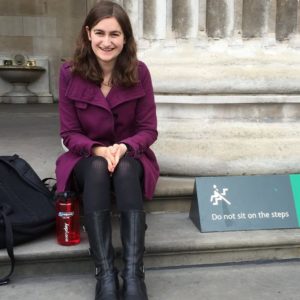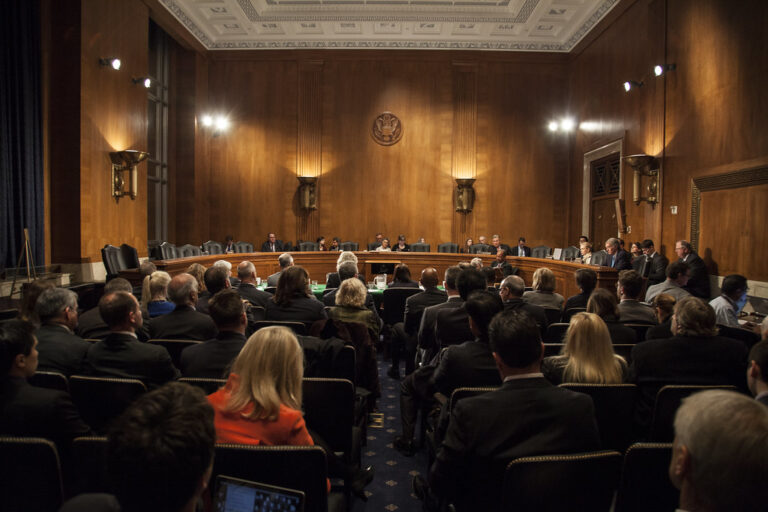
Rachel Sandalow-Ash is a student at Harvard Law School and a member of the Labor and Employment Lab.
For the fifth day, over 30,000 Stop & Shop workers at over 240 stores across New England stayed off the job and on the picket lines as negotiations continue. As previously reported in OnLabor, these workers — represented by five United Food and Commercial Workers (UFCW) locals — walked off the job on Thursday. Stop & Shop workers are protesting the company’s attempts to cut their pay and benefits; among other things, the company is trying to raise workers’ healthcare premiums, reduce workers’ healthcare benefits, and reduce sick days and holiday days for new employees. Last year, Stop & Shop’s parent company, Ahold Delhaize, “reported profits of more than $2 billion to its shareholders.” The Stop & Shop workers’ strike is the largest private-sector strike since 2016, when 40,000 Verizon workers walked off the job. Local and national politicians have joined workers on the picket lines; for instance, Massachusetts Senator Elizabeth Warren joined a Somerville, MA picket line on Friday and urged customers, “Do not cross the picket line.” On the picket lines, workers told reporters why they are on strike. For instance, Rachel Gonzalez, a Stop & Shop employee in Norwood, MA said, “We need to have a fair wage, we need to have affordable healthcare, most of us have families. We have bills just like everyone else.”
Last week, the New York State Nurses Association (NYSNA) reached a tentative agreement with three major New York hospital systems that will guarantee safe staffing, i.e. minimum ratios of nurses to patients. As previously reported in OnLabor, 97% of the 10,000 nurses who work in these hospital systems had threatened to go on strike to secure safe staffing. Now that the parties have reached this tentative agreement, the nurses will not walk off the job. As the New York Times reports, the nurses hope that the safe staffing agreements will serve as a model for contracts with other hospitals in the state. In addition to safe staffing guarantees, the tentative collective bargaining agreement includes 3% annual pay raises and a $100 million commitment from the hospitals to hire more nurses.
The Washington Post and the Boston Globe reported on the Harvard Graduate Students Union’s fight for protections against harassment and discrimination in its first union contract. As previously reported in OnLabor, the university administration is trying to carve out discrimination and harassment complaints from the contractual grievance procedure, while the union insists that student workers must be able to vindicate their civil rights. Madeleine Jennewein, a graduate student and research assistant in virology, told the Washington Post, “Thousands of survivors have suffered harassment and discrimination at Harvard. By refusing to change its broken system, Harvard is knowingly allowing that same abuse to happen again.”
Matt Bruenig writes in Jacobin that even though many people view the US as a low-tax country, “the average American worker has one of the highest compulsory payment rates in the developed world.” In determining the American worker’s compulsory payment rate, Bruenig combined income taxes, employee and employer-side payroll taxes, and employee and employer healthcare premiums (which are mandated under Obamacare’s employer and individual mandates). He found that only the Netherlands has a higher “labor tax burden” than the US. Bruenig argues that these data demonstrate that “American workers already pay more than enough money to provide good healthcare to everyone in the country . . . [but] they pay it into a private insurance system that wastes large portions of it on rents and administrative redundancy.”






Daily News & Commentary
Start your day with our roundup of the latest labor developments. See all
November 25
In today’s news and commentary, OSHA fines Taylor Foods, Santa Fe raises their living wage, and a date is set for a Senate committee to consider Trump’s NLRB nominee. OSHA has issued an approximately $1.1 million dollar fine to Taylor Farms New Jersey, a subsidiary of Taylor Fresh Foods, after identifying repeated and serious safety […]
November 24
Labor leaders criticize tariffs; White House cancels jobs report; and student organizers launch chaperone program for noncitizens.
November 23
Workers at the Southeastern Pennsylvania Transportation Authority vote to authorize a strike; Washington State legislators consider a bill empowering public employees to bargain over workplace AI implementation; and University of California workers engage in a two-day strike.
November 21
The “Big Three” record labels make a deal with an AI music streaming startup; 30 stores join the now week-old Starbucks Workers United strike; and the Mine Safety and Health Administration draws scrutiny over a recent worker death.
November 20
Law professors file brief in Slaughter; New York appeals court hears arguments about blog post firing; Senate committee delays consideration of NLRB nominee.
November 19
A federal judge blocks the Trump administration’s efforts to cancel the collective bargaining rights of workers at the U.S. Agency for Global Media; Representative Jared Golden secures 218 signatures for a bill that would repeal a Trump administration executive order stripping federal workers of their collective bargaining rights; and Dallas residents sue the City of Dallas in hopes of declaring hundreds of ordinances that ban bias against LGBTQ+ individuals void.